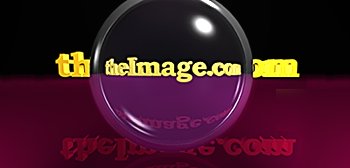
|
|
||||
|
Digital Photography - Scanning 3 dynamic range - other things to consider |
||||||||||||||||||||||||||||||||
|
There are two other specifications often used to describe a scanner. The first, and actually least important, is the color depth. Color scanners once delivered 24 bit color as the standard color depth. What does this mean? Let's look at the chart below. |
||||||||||||||||||||||||||||||||
|
||||||||||||||||||||||||||||||||
|
|
Scanners with 24 bit color can capture up to 16.7 million different colors. If today's computer monitor has an average resolution of 1024x768 or even an extreme resolution of 1600x1200 then it can only display 1 or 2 million colors on any given screen. The human eye cannot resolve more than about 64 shades of gray. (64x64x64 = 262K colors) So of what value is all this extra bit depth? A very good question! 32 bit color can be useful because it contains an extra 8 bits, and this type of file structure can use the extra 8 bits to include an alpha channel. |
|||||||||||||||||||||||||||||||
|
N |
An alpha channel might be used to store transparency data or a mask. Frankly there is little real advantage to the higher color depths, and they are not related directly to what is important, Dynamic Range. Unless there is sufficient Dynamic Rnage to use them, they have little or no real value. When the color bit depth does not divide into 3 equally, the extra bits are usually placed in the Green channel. This is because the human eye is the most sensitive to Green (of the three colors RGB) and will detect changes there more easily. If a scanner has a poor dynamic range, the bit depth is not really important. So what is Dyanamic Range? The important parameter is actually called Dmax. Dmax is the Dynamic Range value that the scanner can resolve. Dynamic range is a log function and runs from 0 to 5. Zero (0) represents 100% transmission (white), and 5 represents 0% transmission (absolute black). Since the scale is logarithmic a difference between 3 and 4 represents a 10 fold change. (Originally the range was considered to be from 0 to 4, but recent technology claims to be able to read through even higher Dmax values.) A good scanner will have a Dmax range between 3.0 and 3.4, and really good scanners have a Dmax value over 3.6. 35 mm slide film has a theoretical limit between 3.6 and 3.8. The wider the Dynamic Range of an original image, the higher its Dmax. Scanners with higher bit depth can divide the range into more segments. There is also an equivalent Dmin (D minimum) value but it is rarely listed. The human eye tends to be over-powereed by bright areas, and it is almost impossible for it to separate levels near white. Since the eye is sensitive to light on a dark background, it is able to resolve more into shadow areas rather than bright areas. The highlight range can be much wider than the darkest shadow range without apparent loss of information to the eye. In order to differentiate information near the highest end of the Dmax range, the scanner must intensify the light to penetrate the darker end of the film. This intensified light will reduce the separation at the low end of the range. Brighter light will wash out small differences at the low end. It appears to be a tradeoff, a gain at the high end with a loss at the lower. There is still some doubt about the usefulness of values near or above 4.0. Print technologies have a much narrower display range then computer monitors or 35 mm slides, so unless you are creating high quality color separations with film, you probably don't need a scanner with a cutting edge Dmax range. The problem with the Dmax value, is that on less expensive scanners the manufacturers seem to treat the Dmax value like a state secret. It is often hard to find even on their WEB sites. On their more expensive lines it is often a prominent value. Frankly a scanner with about 1000 dpi, 24-32 bit color, and a Dmax around 3.0 is adequate for most home users. Those that want better quality will probably know how to recognize it, and may want a Dmax value nearer 3.4 or 3.6, but you must be prepared to pay more for it. |
|||||||||||||||||||||||||||||||
|
Scanner Information |
||||||||||||||||||||||||||||||||
|
Users who
scan at high resolution, or scan large images will
want to look at technologies other than USB for
connectivity. (speeds up scan) Look at USB 2
or Firewire ( IEEE 1394 ) Small objects
can be scanned directly on the glass of a flat bed
scanner. (Use clear acetate on the glass bed to
protect it.) There is very
limited depth of field. Sharp images usually cannot
be made beyond about 0.25 - 0.5
inches. Scanning
printed documents (not originals) will often result
in Moire patterns on the scanned image. Original
photos do NOT produce Moires. Some Moire
patterns can be broken up by placing frosted mylar
between the glass and the printed image. Adjust the
histogram after scanning to provide full range. And
run additional sharpening filters. Flatbed
scanners can do 35 mm slides but there are
problems. The resolution is not usually high
enough. The slide, if placed flat on the glass may
produce interference rings. You need a second light
from behind the slide or a drawer built into the
scanner to facilitate slide
scanning. Slide
scanning is best done using a slide scanner,
although higher end flat beds do a tolerable job
for limited enlargement. Be certain
that the scanner manufacturer provides the
necessary software to communicate with the scanner.
If you are a Photoshop user be certain that the
scanner company also provides a Photoshop
plugin. Adobe does
not supply scanner plugins for Photoshop, it is up
to the scanner manufacturer to supply
them. |
||||||||||||||||||||||||||||||||